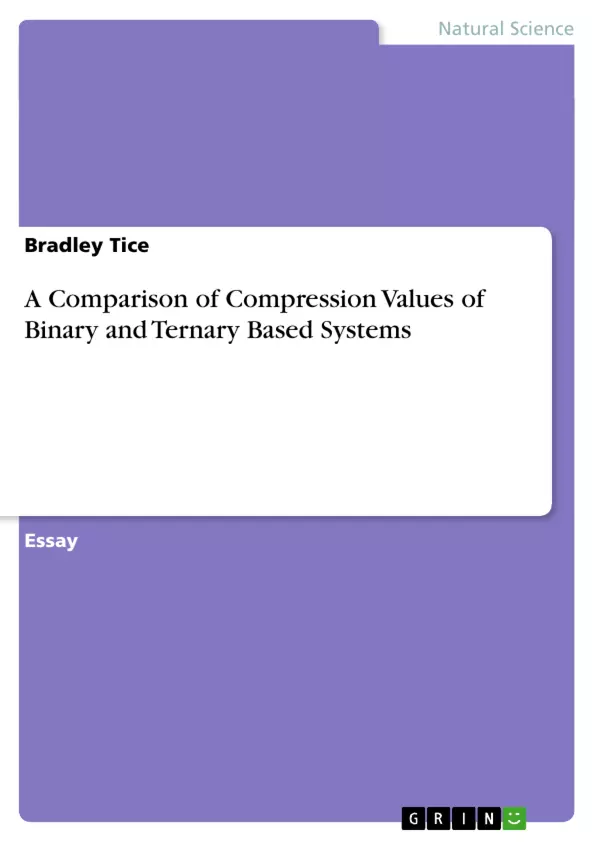The paper will present a comparison of a Radix 2 based system and the Radix 3 based system using an algorithmic complexity program for compression of both random and non-random sequential strings. The results show greater compression in both the Radix 2 and the Radix 3 based number system in both random and non-random sequential strings.
Inhaltsverzeichnis (Table of Contents)
- Introduction
- Randomness
- Compression Program
- Binary System
- Ternary System
- Application of Theory
- References
Zielsetzung und Themenschwerpunkte (Objectives and Key Themes)
This paper explores the potential of using a ternary (radix 3) based system as a fundamental standard in computing and telecommunications, instead of the traditional binary (radix 2) system. The study compares the compression values of random and non-random sequences in both binary and ternary systems, highlighting the advantages of a ternary system.
- Comparison of compression values in binary and ternary systems.
- Application of ternary systems in telecommunications and computing.
- Concept of randomness and its measurement in sequential strings.
- Exploration of the Modified Symbolic Space Multiplier Program for compression.
- Advantages of a ternary system over the traditional binary system.
Zusammenfassung der Kapitel (Chapter Summaries)
- Introduction: The paper introduces the ternary system and its potential for greater compression compared to the binary system. It references existing research by Shannon and Richards supporting the efficiency of radix 3 systems.
- Randomness: This section defines randomness in sequential strings based on Martin-Lof's work, emphasizing the relationship between randomness and compression.
- Compression Program: The Modified Symbolic Space Multiplier Program is explained, illustrating its ability to compress sequences by grouping similar characters.
- Binary System: This section presents examples of nonrandom and random binary strings and their compression using the Modified Symbolic Space Multiplier Program. The results suggest that even random binary strings can be compressed.
- Ternary System: This section presents examples of nonrandom and random ternary strings and their compression using the Modified Symbolic Space Multiplier Program. The results show similar compression capabilities for both types of ternary strings.
- Application of Theory: The paper concludes by discussing the practical applications of a ternary system in data transmission and storage, emphasizing the advantages of increased compression and greater variety for information applications.
Schlüsselwörter (Keywords)
The key terms and concepts in this work include: radix 2, binary, radix 3, ternary, information theory, compression ratio, randomness, Martin-Lof standard, Kolmogorov complexity, Modified Symbolic Space Multiplier Program, telecommunications, and computing. The paper explores the potential of a ternary system for more efficient data transmission and storage compared to the traditional binary system.
- Arbeit zitieren
- Professor Bradley Tice (Autor:in), 2012, A Comparison of Compression Values of Binary and Ternary Based Systems, München, GRIN Verlag, https://www.hausarbeiten.de/document/199142


